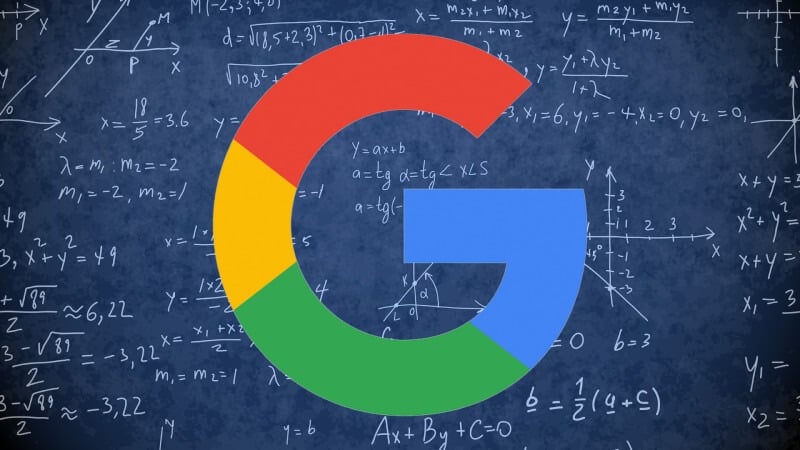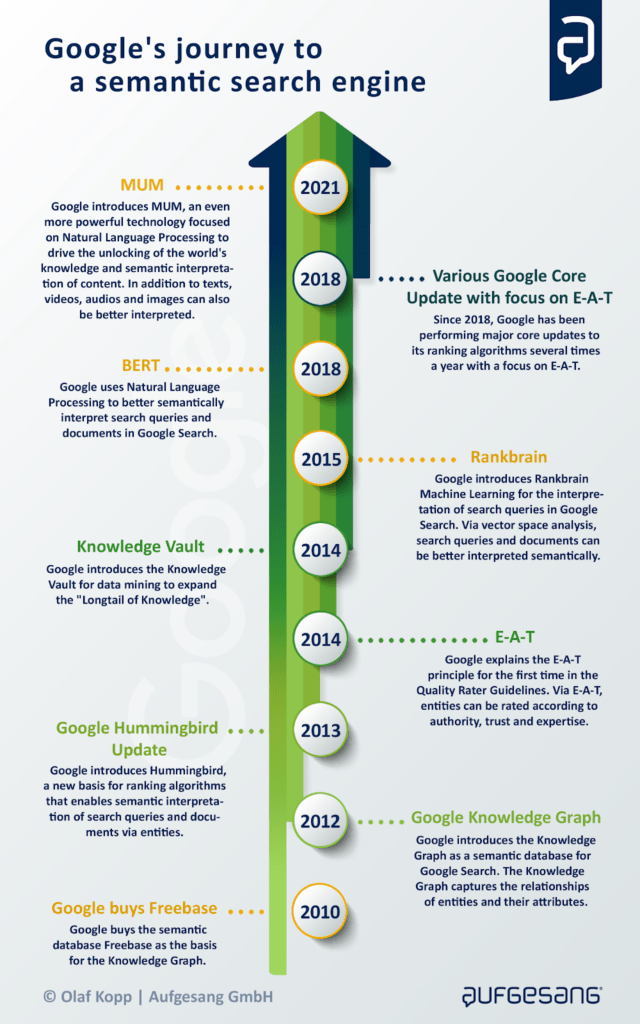
Let’s look at Google’s journey to a semantic search engine, from 2010 with Freebase to 2021 with MUM.
Infograph curtesy of Olaf Kopp
2010 – Google buys Freebase
Google buys the semantic database Freebase as the basis for the knowledge Graph. It was used to build the base for Google results to include structured answers to search queries.
2012 – Google Knowledge Graph
Google introduces the knowledge Graph as a semantic database for Google Search. The Knowledge Graph captures the relationships of entities and their attributes. The objective was to capture the real world in more details with the information easily accessible by searchers (Google users)
2013 – Google Hummingbird Update
Google introduces Hummingbird, a new basis for ranking algorithms that enables semantic interpretation of search queries and documents via entities. In essence, looking at understanding the context of the different words (search queries) together instead of each individual words.
2014 – Knowledge Vault
Google introduces the Knowledge Vault for data mining to expand the “Longtail of Knowledge”.
2014 – E-A-T (Expertise, Authoritativeness and Trustworthiness)
Google explains the E-A-T (Expertise, Authoritativeness and Trustworthiness) principle for the first time in the Quality Rater Guidelines. Via E-A-T, entities can be rated according to authority, trust and expertise. This is not really an update or an algorithm but rather a characteristic that provides an indication if a page or article is of high quality or not.
2015 – Rankbrain
Google introduces Rankbrain Machine Learning for the interpretation of search queries in Google Search. Via vector space analysis, search queries and documents can be better interpreted semantically. This updates uses machine learning to determine the most relevant results.
2018 – Various Google Core Update with focus on E-A-T
Since 2018, Google has been performing major core updates to its ranking algorithms several times a year with a focus on E-A-T.
2018 – BERT (Bidirectional Encoder Representations from Transformers)
Google uses Natural Language Processing to better semantically interpret search queries and documents in Google Search. This update is like an advanced version of Rankbrain and is used to understand users search intentions.
2021 – MUM (Multitask Uniform Model)
Google introduces MUM (Multitask Uniform Model), an even more powerful technology focused on Natural Language Processing to drive the unlocking of the world’s knowledge and semantic interpretation of content. In addition to texts, videos, audios and images can also be better interpreted.
Without a doubt, Google’s semantic search engine journey will keep evolving. There has been various updates in various areas, like the focus on mobile devices. Keep watching this space.
By Manesh Ram, Digital Marketing Specialist. Please follow @maneshram & Meta







